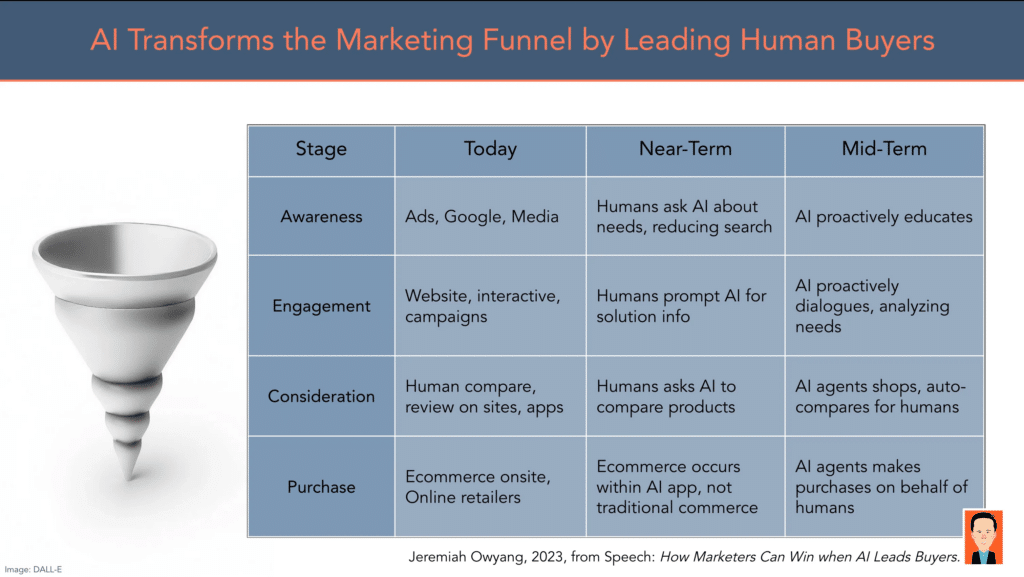So much is changing in marketing at such a frantic pace that I feel we could spend all our time as marketers just reading the latest updates. I’m not sure when we’d actually get our jobs done, but at least we’d be informed.
In this continually evolving environment, I wanted to change things up a bit for this piece to share news and insights I’m hearing from communities I value.
I don’t know where your most useful marketing information comes from, but I especially look to newsletters (here are a few I like) and non-public forums / communities like RISE (focused on emerging marketing trends) and BoneChat (focused on all things orthopedic medical devices).
On to the updates! Let’s start off with LinkedIn.
LinkedIn is far from perfect, but it is definitely my go-to social media for work-related topics. Rather than just being a place to find a job, the platform creates unique opportunities for connection.
An Equalizer for Small Medtech Companies
Patrick Jamnik, President of Episurf Medical, recently presented his company’s product in the BoneChat community, and one statement especially stuck with me afterwards. He mentioned that Episurf is in the process of finding the right distributors here in the U.S. after developing an impressive track record in Europe.
Patrick called LinkedIn a great equalizer for medtech companies to be able to connect with potential distributors. As a representative for a small company, he is allowed to have more fun and “be more human” than many larger companies that have to send every piece of content through several rounds of approval.
As Mark Schaefer advocates, “the most human company wins.”
Larger companies, of course, have the chance to connect in other ways, but companies of all sizes must leverage their opportunities to be real with their customers.
Updated LinkedIn Research
Richard Bliss recently shared the 2024 LinkedIn Algorithm Research Report, a 123-page PDF packed with stats and advice on how to make the most of the platform.
Here are a few interesting takeaways on LinkedIn participation:
Content Creators posting at least once in the past three months make up 7.1%, previously 5.4%. This jumps to 8.9% when including “Instant Reposts”.
The Silent Community, those who read without engaging, now account for 57%, down from 61%.
Even though there was an increase in recently active users, that’s still a pretty low amount overall. If you’re wondering why you’re not seeing a lot of activity from your contacts, there’s a pretty good chance they aren’t in that 8.9% percent of people.
Also, a large percentage of your audience or contacts never engage with anyone on the platform. It’s not personal.
This is important context as you’re reviewing the success of your recent social campaign.
Tracking Engagement Is Only Getting Harder
Speaking of measuring engagement, “Cookiepocalypse,” the phasing out of third-party tracking cookies from Google Chrome, has officially begun. If the switchover from Universal Analytics to GA 4 is any indication, we’ll see marketers drag their feet for a very long time before actually updating their systems. I confess I have some homework to do here, as well.
Even more interesting in upcoming engagement measurement challenges is this chart from Jeremiah Owing on how AI tools will transform the Marketing Funnel:

If you haven’t had the chance to play with any AI assistants or search tools, you should take the time to understand what kinds of responses they provide. Much like voice search (Alexa / Siri), the new crop of tools out there do not provide a set of ten results like Google used to (and still occasionally does). They provide an answer. (For more on how these tools are behaving, here’s a quick LinkedIn post about Perplexity.)
To bring this into the marketing funnel type of parlance, people in the consideration phase can ask their favorite AI tool to compare two products and get a recommendation on why they should pick one over the other.
This process can completely allow for people to get the info they need without ever having to visit our websites.
This type of shopping experience that bypasses our marketing collateral can happen today using review websites and word of mouth, but people will be able to complete the process much more easily going forward.
Yes, losing tracking cookies will be challenging, but losing website visitors is even more difficult.
There’s plenty of speculation on how search engine optimization (SEO) will evolve into artificial intelligence optimization, but the most important thing at the moment is to realize that this shift is coming.
The “discoverability” of your company will only continue to become more of a challenge. We must continue to actively engage through every channel available to us and actively be on the lookout for new channels to emerge.
There are exciting opportunities ahead as we ride these shifting waves of technology and human behavior.
Michael spends a great deal of time with the healthcare industry both professionally and personally, which gives him the perspective of what stakeholders on either side of the care equation need.
He began coding in 2008 and subsequently shifted his attention entirely to online marketing. Michael completed his MBA in 2018, focusing on the intersection of healthcare and marketing.


